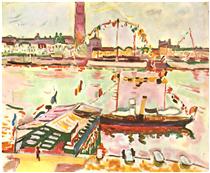
1882 - 1963
Georges Braque
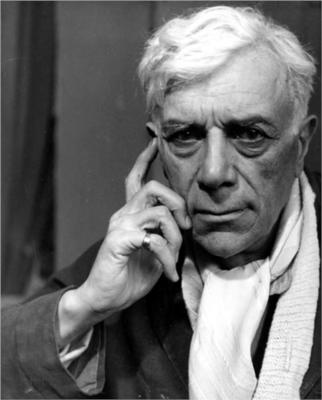
description
Georges Braque is a major 20th-century French painter, collagist, draughtsman, printmaker, sculptor, and founder of Cubism (together with Pablo Picasso).
Braque came from a family of artisans. He grew up in Le Havre and studied as a painter and decorator, like his father and grandfather. However, he also seriously studied painting in the evenings at the School of Fine Arts. The artist’s early works were impressionistic. After viewing an exhibition of the works by Fauves in 1905, the painter adopted their style. Shiny red, white, yellow and orange colours prevailed in his works.
The artist experimented a lot with the shape of objects and the surrounding space. He was one of the first to use the collage method and to introduce additional materials into paintings: sand, paper, wood, letters and numbers. Moreover, he was actively engaged in decorative artwork, designed several church stained glass windows and painted his famous flying birds on the ceiling in the Etruscan hall of the Louvre.
From 1908 to 1913 Braque intensively studied the effects of light and perspective. His paintings began to reflect his newfound interest in geometry and perspective.
The artist participated in the First World War. In 1915, he was seriously wounded and returned to painting only in 1917. At that time, he was mostly painting still lifes. A few years later, he looked for greater clarity and harmony in the image.
Braque occasionally created vanitas paintings (paintings which contain symbols of death).
In the 1950s, the artist’s central motif was a flying bird. He created many drawings, engravings and sculptural works. He also illustrated books, did scenery and costumes for the theatre and created murals for the Louvre. However, Braque preferred painting.
Key ideas:
– Unlike most Fauvists, Braque was concerned not only with the location of colour spots in the image but also with the construction of space.
– Braque’s Cubism is somewhat more rational than that of Picasso’s.
– For Braque, Cubism was something stable, balanced and methodical. His late works in this style have exquisite and harmonious colours.
– A characteristic feature of the author’s painting is several points of view on the depicted object. Done in a light, elegant manner, Georges Braque’s paintings create the sense of weightlessness and flight: objects in them seem to soar in the air, dance and collide with each other. This manner allows you to look at objects simultaneously from several angles, creates a sense of illusion and excites your imagination.
– Braque introduced different letters and numbers to his paintings.
– He was the first to mix paints with sand, wood, iron filings and other materials previously unused in art.
– Some people claim that he was the one who created a collage.
– After the war, Braque’s style became less angular. His compositions consisted of gracefully curved lines. The nature of these works is defined as esoterically contemplative. In this style, he did mostly still lifes, using pale colours. This roughness and plasticity were achieved by mixing paints with sand.
1882
1897
1900
1905
1907
1908
1910
1914
1920
1930
1949
1950
1963
The birth of the artist
Braque became a student of French artist Charles Lhuillier
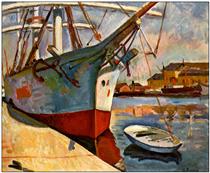
Braque moved to Paris

Met Henri Matisse and André Derain

Cubism
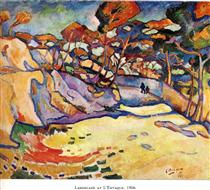
Braque visited the workshop of Pablo Picasso

“Synthetic Cubism”
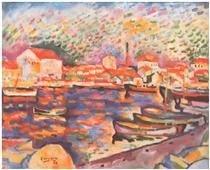
The artist was drafted into the army

The artist mostly painted still lifes and figures in the interior

Started to develop the theme of landscape painting.
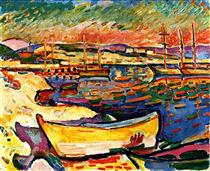
“Workshops”
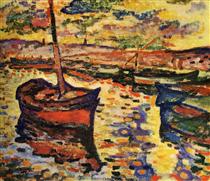
The appearance of the flying bird motif

The death of the artist

Georges Braque
On Artist
flow
Impressionism
Fauvism
friends
Pablo Picasso
Raoul Dufy
Oton Freeze
Marie Laurencin
Francis Picabia
artists
Henri Matisse
Andre Derain
Paul Cezanne
Nicolas Poussin
Louie Charles
Eugene Henri Paul Gauguin
By Artist
flow
Cubism
Futurism
Abstractionism
Purism
friends
Pablo Picasso
Jean Dominic Anthony Metzenzhe
Maurice de Vlaminck
Max Jacob
artists
Diego Rivera
George Valmier
Louis Marcoussis
Roger de la Freinet
Leo Gestel
Joseph Fernand Henri Leger
David Alfaro Siqueiros
Vilhelm Lundstrom
Mikhail Larionov
Carlos Nadal
